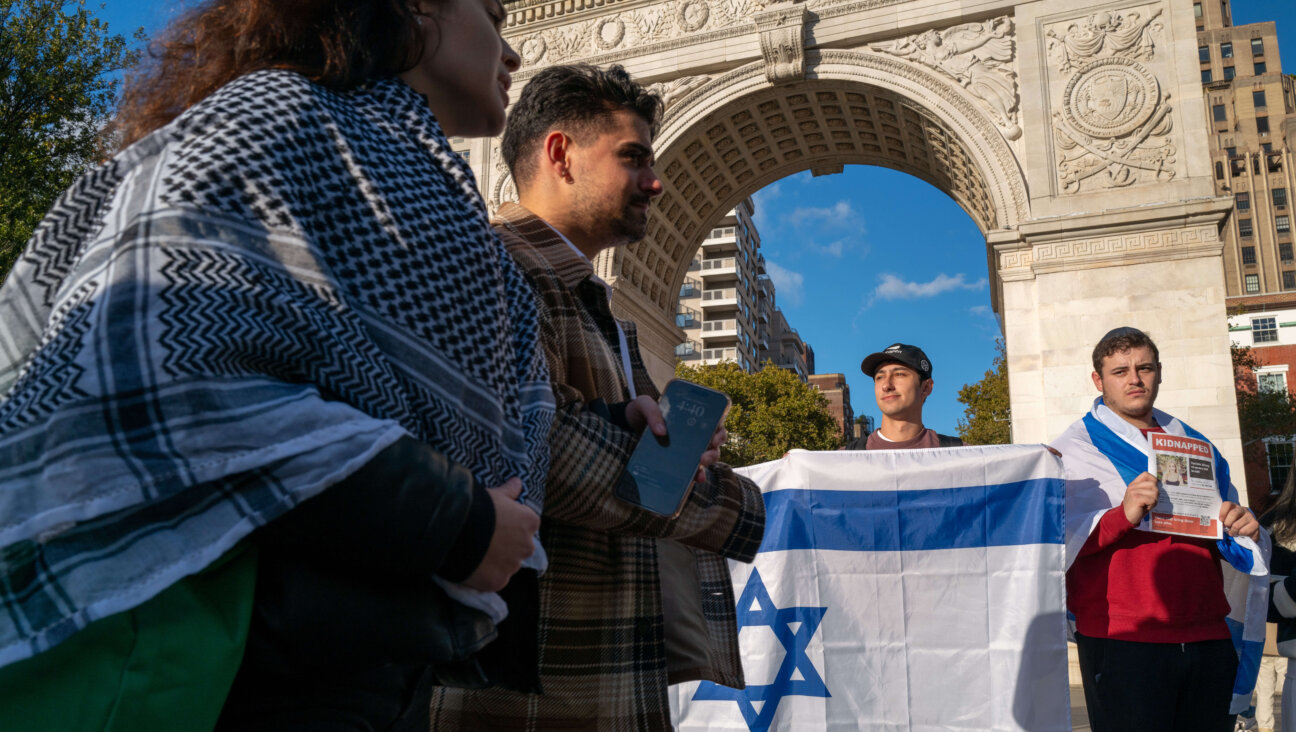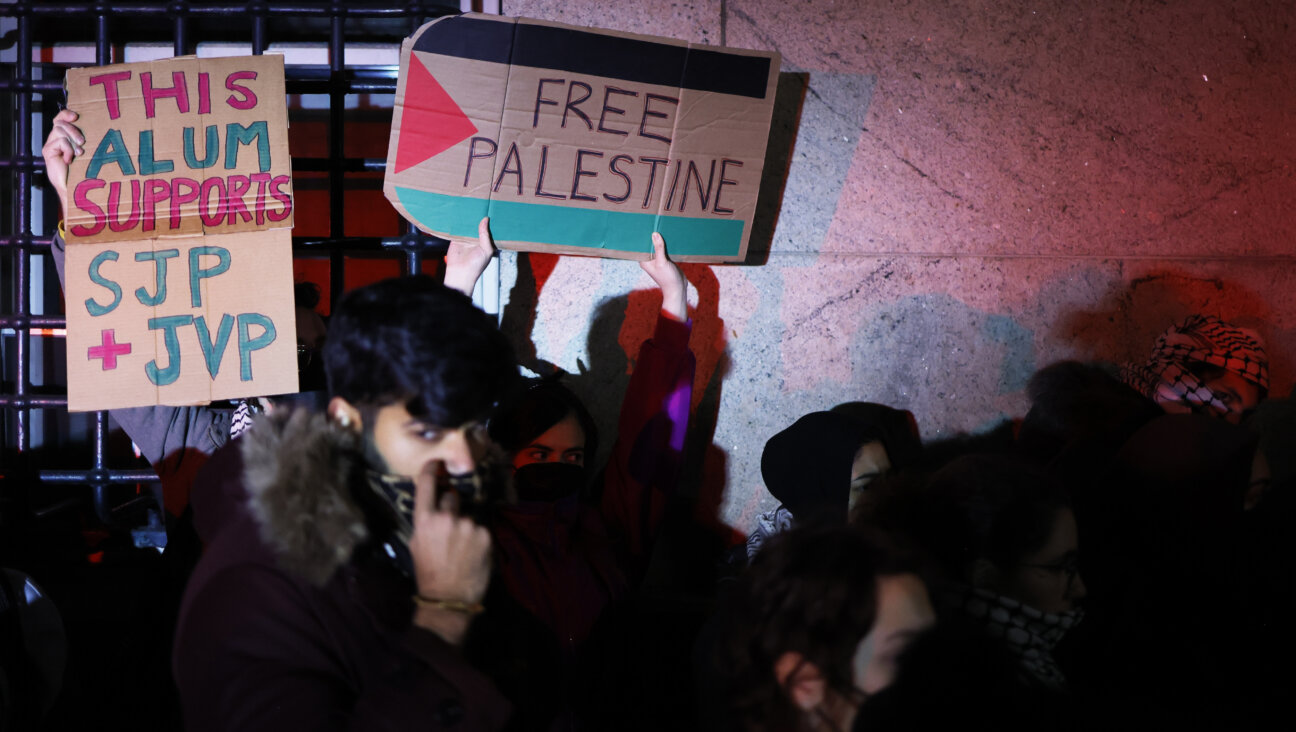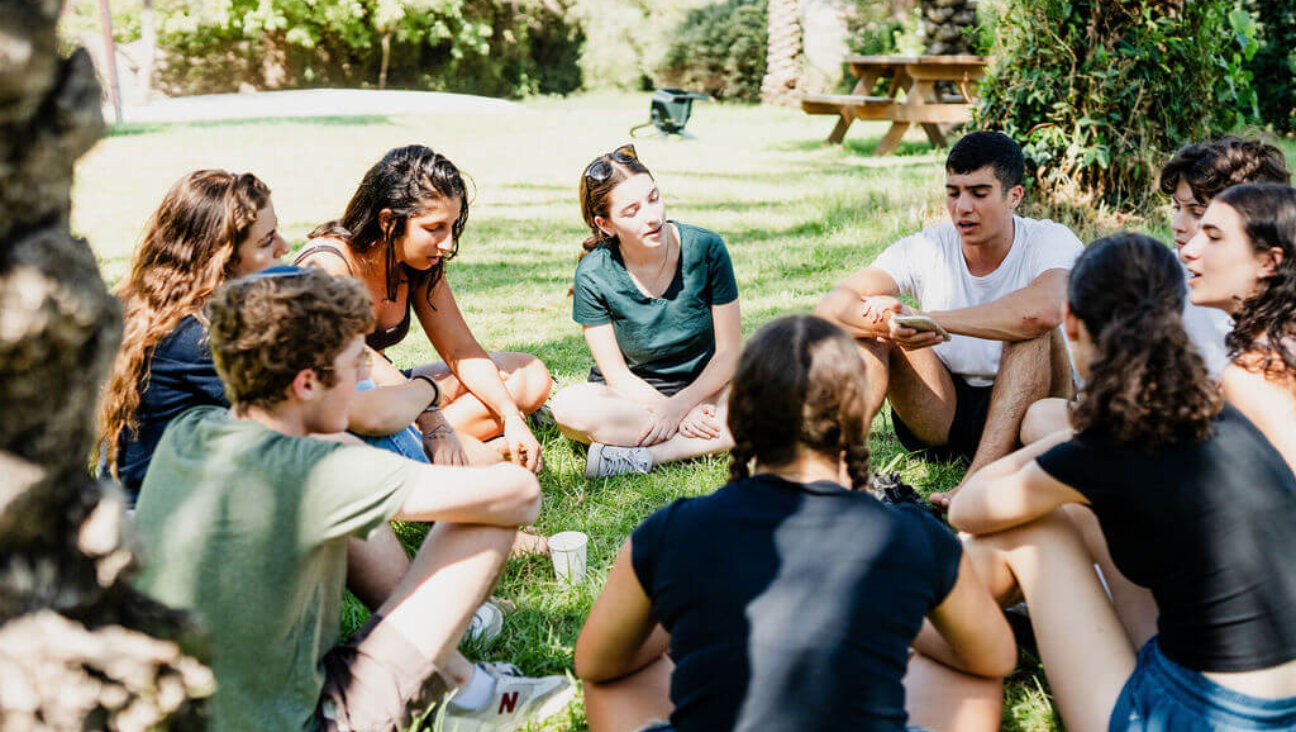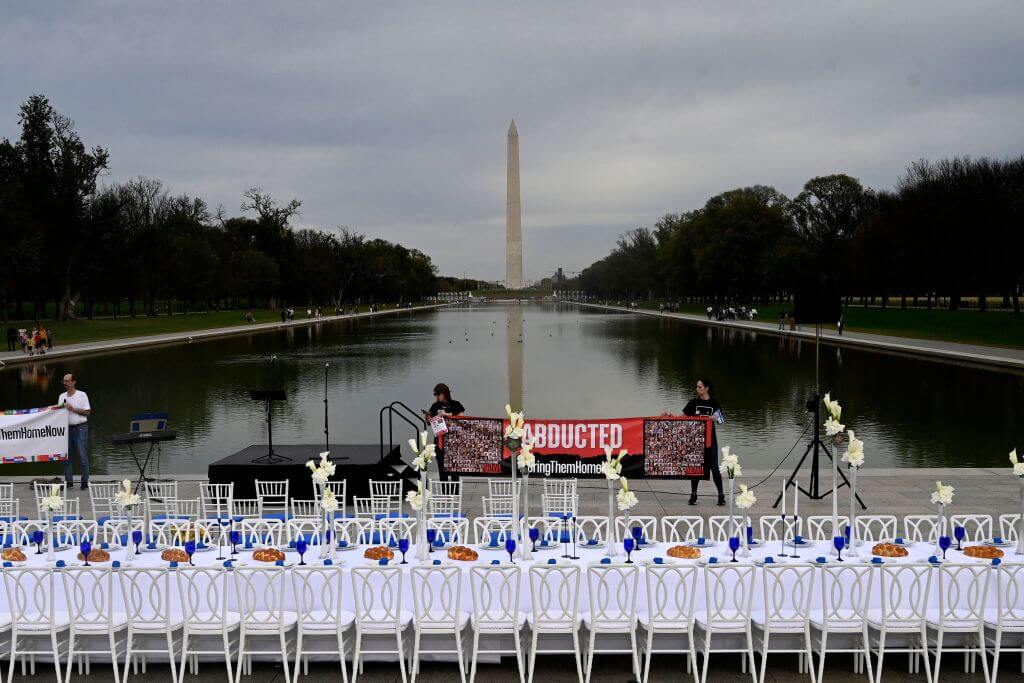Why You Shouldn’t Go To Synagogue On Rosh Hashanah This Year

Image by Nikki Casey
As the summer ends, Americans get back to business, and for American Jews, there’s no bigger business than the High Holidays at your local synagogue. I have some unconventional advice for you this year: Don’t go.
Instead of attending the kitschy mass performances that even your rabbi probably finds uninspiring, choose a different holiday from the Jewish calendar, one that you don’t currently observe, and commit to it instead. Sukkot is coming up soon, and most rabbis (including this one) love it. Or Tu B’Shvat in the winter. Or maybe Shabbat — it happens every week.
Anything but the typical Rosh Hashanah at the typical non-Orthodox American synagogue. Sure, it’s part of the annual cycle of Jewish holidays, and in that context it’s fine. But outside of that context, as one of the only two or three days many Jews spend inside a temple or synagogue, Rosh Hashanah is an epic fail.
There are at least three reasons for you to avoid your local temple or synagogue this Rosh Hashanah. First, the holiday’s themes and liturgy focus on the least believable, most misunderstandable aspects of Jewish theology. Sure, introspection is great, and asking for forgiveness from friends and relatives can be extremely powerful. But the Man in the Sky with the big Book of Life? The Birthday of the World? Who are we kidding here? Does anyone believe this stuff?
And yet, here we are again, listening to authority figures drone on about them, standing up, sitting down, praying to a deity we don’t believe in. No wonder half of American Jews are leaving the fold — this fold sucks.
This is especially a problem for Conservative and Reform congregations, less so for Orthodox ones. But even the more, shall we say, reconstructionist versions of repentance reinforce the most problematic themes of Jewish tradition. Yes, an important part of being Jewish — religious or secular — is reflecting on your actions and trying to do better. For secular social justice Jews, that might mean increasing your commitment to activist work. For traditional religious Jews, it might mean keeping kosher — or, even better, “keeping yosher,” that is, holding oneself to a higher moral standard.
But these aren’t the only parts of being Jewish. Take the High Holidays out of context, and you’re left with a religion of finger-wagging. The guilt; the sins; the chest-beating; the fundraising; the memories of your grandmother, who only wanted you to marry Jewish. Oy!
In contrast, other holidays are refreshingly life-affirming. Sukkot is a holiday of harvest, joy, environmentalism, companionship, paganism, cyclicality, agriculture and community. Passover is a holiday of freedom, liberation, spring, nature, debate and making history new each year. The Sabbath is a time of rest, non-doing, mindfulness, holiness, community and family. None of these has much to do with guilt.
Whether gross or refined, the Days of Awe overemphasize one aspect of the Jewish experience — and a problematic one at that. Trade it in.
Second, Rosh Hashanah is a series of mixed messages. The day itself is confused, an amalgam of celebration and repentance, conviviality and sobriety. Are we supposed to celebrate the Birthday of the World or get busy with apologizing to God? Do we wish each other a happy new year or a serious, pious new year?
These mixed messages are amplified a hundredfold in most American contexts. One name for Yom Kippur, for example, is the Day of Death. Pious Jews deny themselves the vital activities of embodied life: food, sex, bathing. We are invited to exist in a liminal space, neither alive nor dead, and to do the hard work of looking inward.
That, and also to show off our new Italian suits, intone responsive readings and fill out pledge cards. The High Holidays, in many places, are the time to see and be seen — the Fashion Week of Jewish life. It’s a great time to gossip about other people in the congregation, for example. One big, happy family.
So which is it, a funeral or a quinceañera?
And then there’s the formality of the service, with far more monotone readings, honorifics, up-and-downs and rehearsed speech than any other time in the Jewish year. Believe me, your rabbis hate this, too — they’re just stuck with it. Even though they know that the formality makes no sense if what we’re supposed to do is either celebrate or introspect (or, somehow, both), the HiHos are big business. You don’t mess with them.
I’m exaggerating somewhat, but this isn’t just a problem of “bad shuls.” Even in the best of synagogues, these mixed messages make Rosh Hashanah a poor stand-in for the Jewish experience.
Finally, there’s the whole model of what Jewish life is supposed to be about.
Before the High Holidays, my rabbi and cantor friends spend weeks practicing every detail of the services, like b’nai mitzvah with receding hairlines. God forbid the sermon is too pro-Israel, or not pro-Israel enough, or too challenging, or not challenging enough. It’s like the congregation is an assembly of East German Olympic judges (I’m dating myself here) ready to be unimpressed.
Often, the High Holiday congregation is an audience, appreciating (or not) the cantor’s voice, bewildered by the Hebrew, alienated by the prayers. This is consumer Judaism at its worst: customers guilted into experiencing a mediocre product. It’s Judaism at its least interactive, least embodied, least kinesthetic, least engaging. It’s more show than service.
Rosh Hashanah is a disempowering feedback loop. Presenting a pageant for passive consumers, it creates more passive consumers. Dress nice, be infantilized and write a check — that’s the Judaism it presents.
And yet, while I am urging you to trade in Rosh Hashanah for a better, more empowering holiday, I wouldn’t want you to abandon it entirely. Because even amid the insincere sincerity and mass-market packaging, there’s still the Shofar, the epitome of Jewish magic and ritual.
Where the prayer liturgy is prolix and verbose, the Shofar is wordless. Where the theology of Rosh Hashanah is a mess, the primal call of the Shofar can be a shattering experience, packing thousands of years of history and pre-history into one, inchoate cry. Where Rosh Hashanah is often a day of infantilizing mediation, the Shofar is vivid and immediate. It calls to you, personally.
Of course, blowing the Shofar, too, can be a performance — I have been to many places where it is met by applause at the end. But at its best, the Shofar cuts through all that. The ancient magic of the ram’s horn is a reminder both of how much has been lost in terms of spiritual intensity and of how much is still available — if you want it and work for it yourself.
My advice? Get yourself a Shofar. Learn how to blow it. Listen to it and be inspired by it, interpreting its call as you wish. Share the experience with others.
Go to synagogue some other time.
Jay Michaelson is a contributing editor at the Forward. Follow him on Twitter, @JayMichaelson
The Forward is free to read, but it isn’t free to produce

I hope you appreciated this article. Before you go, I’d like to ask you to please support the Forward.
Now more than ever, American Jews need independent news they can trust, with reporting driven by truth, not ideology. We serve you, not any ideological agenda.
At a time when other newsrooms are closing or cutting back, the Forward has removed its paywall and invested additional resources to report on the ground from Israel and around the U.S. on the impact of the war, rising antisemitism and polarized discourse.
This is a great time to support independent Jewish journalism you rely on. Make a gift today!
— Rachel Fishman Feddersen, Publisher and CEO
Support our mission to tell the Jewish story fully and fairly.
Most Popular
- 1

Fast Forward Ye debuts ‘Heil Hitler’ music video that includes a sample of a Hitler speech
- 2

Opinion It looks like Israel totally underestimated Trump
- 3

Culture Cardinals are Catholic, not Jewish — so why do they all wear yarmulkes?
- 4

Fast Forward Student suspended for ‘F— the Jews’ video defends himself on antisemitic podcast
In Case You Missed It
-

Culture Should Diaspora Jews be buried in Israel? A rabbi responds
-

Fast Forward In first Sunday address, Pope Leo XIV calls for ceasefire in Gaza, release of hostages
-

Fast Forward Huckabee denies rift between Netanyahu and Trump as US actions in Middle East appear to leave out Israel
-
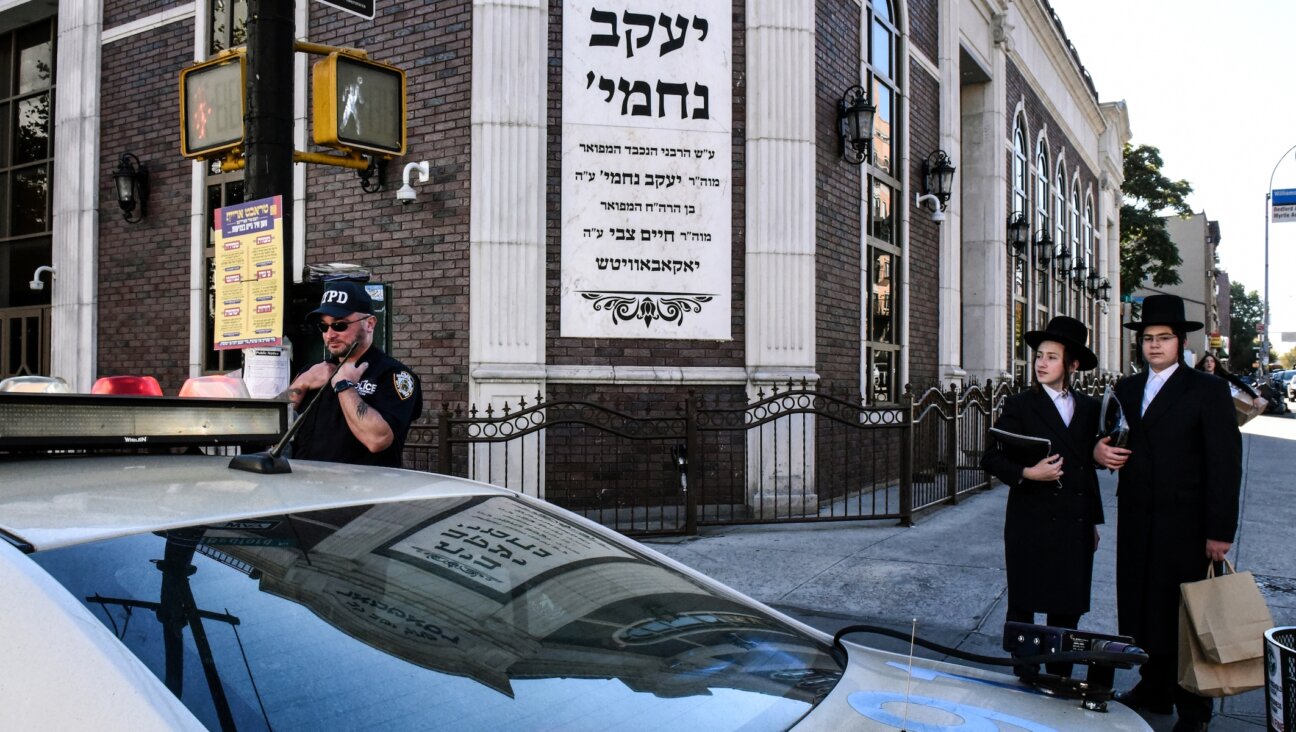
Fast Forward Federal security grants to synagogues are resuming after two-month Trump freeze
-
Shop the Forward Store
100% of profits support our journalism
Republish This Story
Please read before republishing
We’re happy to make this story available to republish for free, unless it originated with JTA, Haaretz or another publication (as indicated on the article) and as long as you follow our guidelines.
You must comply with the following:
- Credit the Forward
- Retain our pixel
- Preserve our canonical link in Google search
- Add a noindex tag in Google search
See our full guidelines for more information, and this guide for detail about canonical URLs.
To republish, copy the HTML by clicking on the yellow button to the right; it includes our tracking pixel, all paragraph styles and hyperlinks, the author byline and credit to the Forward. It does not include images; to avoid copyright violations, you must add them manually, following our guidelines. Please email us at [email protected], subject line “republish,” with any questions or to let us know what stories you’re picking up.








